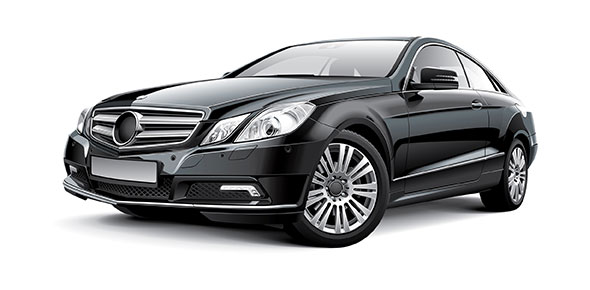Related Flashcards
Related Topics
Cards In This Set
| Front | Back |
|
LANES
Keep to the Right Drive on the right half of the roadway except: |
1. When overtaking and passing another vehicle proceeding in the same
direction. 2. When driving on a road divided into three or more marked lanes. 3. When driving on a road designed and posted with signs for one-way traffic. 4. When otherwise directed by a police officer or traffic control device. 5. When an obstruction makes it necessary for you to drive left-of-center. Yield the right of way to all vehicles traveling in the proper direction on the unobstructed portion of the highway. |
|
Multiple Lane Roads
When a road has been divided into four or more marked lanes, or where traffic within municipalities is lawfully moving in two or more continuous lines in the same direction, the following rules apply: |
Same direction, the following rules apply:
• A vehicle shall be driven as closely as possible within a single lane of traffic; it shall not be moved from the lane until the driver has first determined that such movement can be made safely. A turn signal must be given before lane changes. • On a roadway divided into three lanes, a vehicle shall not be driven in the center lane except where that center lane is devoted exclusively to traffic moving in the direction the driver is proceeding. |
|
Slow Traffic
Vehicles moving slower than the traffic flow must use |
The available right lane
or stay as close as possible to the right-hand curb or edge of the roadway. |
|
Divided Highway
A vehicle shall not be driven over, across or within any dividing space, barrier or section of a highway, except |
Through an opening or crossover
established by authority. Such dividing space, barrier or section may be occupied for an emergency stop or in compliance with an order of a police officer. |
|
TURNS
Right Turn |
Turn right as close as possible to the right-hand curb or edge of the road. |
|
Right-Hand Turn on Red
In Ohio, it is legal to turn right after stopping at a red traffic signal, but only when: |
1. There is no sign posted at the intersection forbidding right turns on red;
2. You have come to a complete stop and have allowed all crossing traffic and all pedestrians to proceed through the intersection; and 3. You can clearly see that the turn can be completed safely. |
|
Left Turn
The driver of a vehicle intending to turn left: |
At an intersection where traffic is moving in both directions on each
road entering the intersection shall make the approach in the right half of the road nearest the center line. The turn should be made into the lane on the right half of the street nearest the center line. • At an intersection where traffic is restricted to one direction on one or more of the roads shall make the approach in the extreme left-hand lane. Turn into the lane farthest left where traffic in that direction is allowed. • Is required to yield the right-of-way to any vehicle approaching from the opposite direction. Prior to engaging a left-hand turn, the driver must wait for oncoming traffic to clear the intersection. One may advance into the intersection as a prelude to turning, provided that no other traffic control devices prohibit this action. DIAGRAM |
|
Signal
A turn signal must be given at least |
100 feet before the intended turn. This
may be accomplished by using either |
|
STOPPING
A driver must stop: |
1. Behind the stop line or crosswalk at any stop sign or at a red traffic signal.
2. Behind the stop line or crosswalk at any red traffic signal where right or left turns on red are permitted. The driver may only proceed with a legal turn on red after coming to a full stop and yielding the right of way to all crossing traffic and to all pedestrians crossing the intersection. 3. At a flashing red traffic signal, yielding to all traffic that does not have to stop. 4. At a sidewalk, or if there is no sidewalk, at a point prior to entering the roadway, when emerging from an alley, driveway or private road on a business or residential district. Drivers must yield the right of way to any pedestrian on the sidewalk. 5. Before entering an intersection if there is not sufficient space on the other side to accommodate the vehicle. The law applies whether or not a traffic signal gives a driver the right to proceed. 6. At the approach of a public safety vehicle (such as a police car, fire engine or ambulance) displaying flashing lights and sounding a warning signal, unless the vehicle is traveling in the opposite direction on a divided highway. Drivers should move as far as possible to the right of the road and remain there until the emergency vehicle has passed. |
|
Stopping for a School Bus
When a school bus is stopped on a roadway to pick up or drop off passengers, the following regulations apply to other drivers on the roadway: |
1. When a school bus driver is preparing to stop the bus, he or she activates
four amber lights—two on the front and two on the rear of the bus. These lights continue to flash until the bus is fully stopped. Other vehicles are not required to stop during this preliminary stage of the RIGHT TURN SLOW OR STOP LEFT TURN 39 eight-light warning but should prepare to stop as soon as the bus comes to a full stop. When the bus comes to a complete stop, the amber lights stop flashing and four red lights—two in front and two in back—start flashing while the children enter or leave the bus. In addition, a stop arm with flashing red lights is automatically extended beneath the window on the left side of the bus. 2. If the bus is stopped on a street or road which has fewer than four lanes, all traffic approaching the bus from either direction must stop at least 10 feet from the front or rear of the bus and remain stopped until the bus begins to move or the bus driver signals motorists to proceed. 3. If the bus is stopped on a street or road which has four or more lanes, only traffic proceeding in the same direction as the bus must stop. |
|
Stopping Distance
The distance it takes to stop your vehicle depends |
On your reaction time,
speed at which you are traveling, the condition of your brakes and the condition of the pavement (wet, dry, icy). A driver must maintain sufficient distance between his or her vehicle and the vehicle ahead. |
|
YIELDING
A driver must yield the right of way: |
1. When directed by a yield sign.
2. When crossing or entering a through highway from a smaller, lesstraveled road. 3. To a vehicle approaching from the right at an intersection of two similar roads without a traffic control device. 4. To a pedestrian in a marked crosswalk, or at an unmarked crosswalk at an intersection. 5. On the approach of a public safety vehicle (see “Stopping,” no. 6). 40 6. For all vehicles which are part of a funeral procession. Each vehicle in the funeral procession must have its headlights lit and must display a purple and white pennant. 7. To oncoming traffic when making a left turn. 8. To traffic approaching an intersection before making a right turn at a red light. |
|
Passing to the Left
When passing traffic traveling in the same direction, no vehicle shall be driven to the left of the center of the road unless |
The left side is clearly visible and
is free of oncoming traffic for a sufficient distance ahead. Passing shall be completed without interfering with the safe operation of traffic approaching from the opposite direction or any vehicle being overtaken. |
|
Passing is not permitted under the following circumstances:
|
1. When approaching the crest of a grade or a curve in the roadway where the driver’s view is obstructed and the driver cannot see if the pass will interfere with oncoming traffic. 2. Within 100 feet of a bridge, viaduct or tunnel when the driver’s view is obstructed. 3. Within 100 feet of approaching an intersection. 4. Within 100 feet of a railroad grade crossing. |
|
When passing to the left, the law requires that a driver overtaking another
vehicle do these things: |
1. Sound the horn to warn the driver of the vehicle being overtaken that he/
she is about to be passed. 2. Signal the intent to pass. 3. Pass to the left of the vehicle being overtaken at a safe distance and return to the right side of the roadway only after the overtaking vehicle is safely clear of the vehicle being overtaken. 4. Return to the right lane as soon as the pass has been safely completed and before coming within 200 feet of any approaching vehicle |






